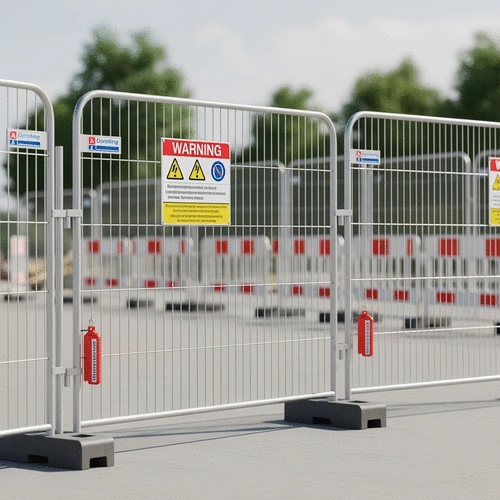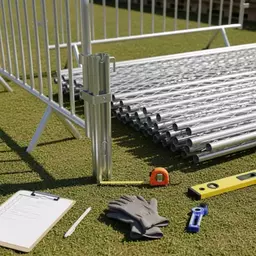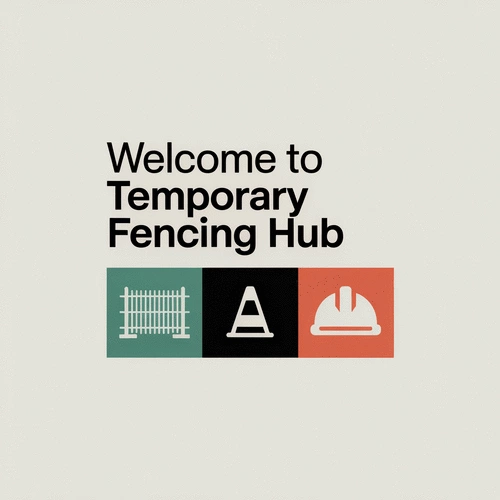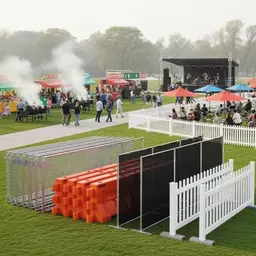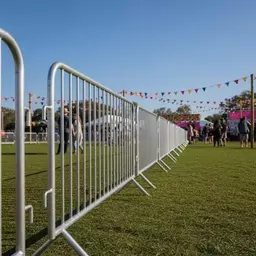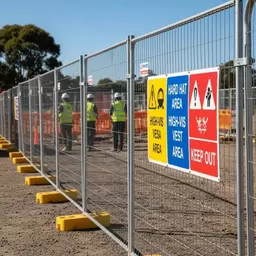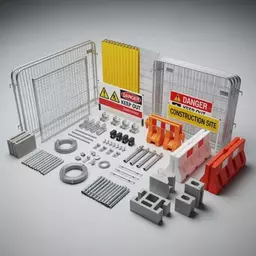Have you considered how crucial temporary fencing is for ensuring safety and compliance at events and construction sites? The right fencing solution can significantly impact public safety, project efficiency, and even your reputation. Let’s explore the key takeaways from this insightful guide on temporary fencing in Australia.
What You Will Learn
- Temporary fencing plays a critical role in enhancing safety and security at construction sites, events, and during emergencies.
- Compliance with local regulations is essential, as it reduces risks and helps avoid potential fines.
- There are various types of temporary fencing, including chain link, mesh, and plastic safety fencing, each tailored for specific applications.
- Investing in quality temporary fencing leads to long-term benefits such as durability, lower maintenance costs, and an enhanced professional reputation.
- Regular compliance audits are crucial for maintaining safety standards and identifying potential issues before they escalate.
- Utilizing a structured buyer’s checklist can streamline the selection process for temporary fencing, ensuring it meets your specific needs.
Key Applications and Benefits of Temporary Fencing
This visual highlights the primary uses and advantages of compliant temporary fencing, emphasizing areas like safety, efficiency, and various system types.
Applications of Temporary Fencing
- Construction Sites
- Events (Crowd Control)
- Demolition Projects
- Emergency Situations
Benefits of Compliant Fencing
- Enhanced Safety & Security
- Compliance Reduces Fines
- Streamlined Operations
- Builds Trust & Reputation
Temporary Barrier Systems
Chain Link Fencing
Visible & sturdy, ideal for construction sites.
Mesh Fencing
Good for crowd control, allows airflow & visibility.
Plastic Safety Fencing
Lightweight & portable, perfect for marking areas.
Key Aspects of Compliance
Regular Audits
Ensure ongoing adherence to safety regulations.
Documentation
Proof of compliance for inspections, crucial for liability.
Corrective Actions
Proactive steps to address issues identified in audits.
Understanding Temporary Fencing and Its Importance in Australia
When we talk about temporary fencing, we’re referring to a critical component in various scenarios like construction sites, outdoor events, and crowd control situations. But what exactly is it? Temporary fencing is a portable barrier that can be erected quickly and effectively to manage safety and security concerns. Understanding when and where it’s required is essential for businesses, builders, and event organizers alike.

Temporary fencing comes into play in numerous situations. For instance, if you're hosting a large festival or managing a construction site, you might find yourself needing to delineate boundaries and keep unauthorized personnel out. It’s not just about creating a physical barrier; it’s about ensuring that everyone involved feels safe and secure. For guidance on specific regulations, you can refer to the Australian Temporary Fencing Safety Standards.
What is Temporary Fencing and When is it Required?
Temporary fencing serves a wide range of purposes. Here are some common scenarios where it’s required:
- Construction Sites: To protect the public and keep workers safe.
- Events: To control crowds and create designated areas for activities.
- Demolition Projects: To prevent access to hazardous zones.
- Emergency Situations: To secure dangerous areas after an accident.
As you can see, whether it’s a bustling festival or a quiet construction site, temporary fencing is vital. It helps in managing risk while also adhering to safety standards that are crucial in Australia's regulatory landscape.
Benefits of Compliant Temporary Fencing for Safety and Security
Investing in compliant temporary fencing offers numerous benefits. First and foremost, it enhances safety by preventing unauthorized access, which is particularly essential in high-risk areas. Additionally, compliant fencing meets local regulations, reducing the risk of fines and complications. By adhering to safety standards, you demonstrate a commitment to the well-being of your staff and guests.
Moreover, compliant temporary fencing has a direct impact on your project's efficiency. When the right measures are in place, it streamlines workflows and helps in maintaining order during chaotic events. Your investment in quality temporary fencing can significantly improve the overall experience for everyone involved.
Understanding Temporary Barrier Systems and Their Applications
Temporary barrier systems are not one-size-fits-all; they come in various types tailored for specific applications. Here’s a look at a few prevalent options:
- Chain Link Fencing: Offers visibility and sturdiness, ideal for construction sites.
- Mesh Fencing: Great for crowd control while allowing airflow and visibility.
- Plastic Safety Fencing: Lightweight and portable, perfect for marking off areas.
Each type of fencing has its unique applications, and understanding these distinctions is crucial for making an informed decision. At Temporary Fencing Hub, we strive to provide the insights you need to choose the right solution for your project. For more insights on different products available, consider exploring our temporary fencing products in Australia.
Pro Tip
When selecting temporary fencing, always consider the specific needs of your site. For high-visibility areas, opt for mesh or chain link fencing that allows airflow while providing security. Additionally, ensure that your fencing meets local compliance standards to avoid potential fines and enhance safety for everyone involved.
Consolidating Your Knowledge: The Value of Compliance
Understanding compliance in temporary fencing is crucial for ensuring not just safety but also project efficiency. When you comply with regulations, you're not just ticking boxes—you're actively creating a safer environment for workers, attendees, and the public. Compliance enhances safety by ensuring that your fencing solutions meet established standards, significantly reducing the risk of accidents and liabilities.
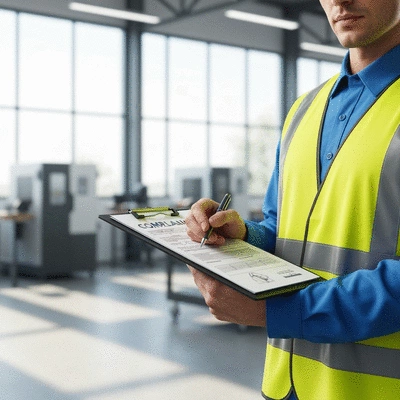
Moreover, compliant temporary fencing contributes to smoother project execution. When everyone is on the same page regarding safety protocols, it leads to fewer disruptions and delays. That's a win-win situation for both project managers and stakeholders!
How Compliance Enhances Safety and Project Efficiency
Compliance ensures that temporary fencing meets specific safety standards, which can significantly enhance overall project efficiency. Here are a few key ways compliance impacts safety and efficiency:
- Reduces Risk: Compliant fencing minimizes the risk of accidents and injuries at construction sites or events.
- Streamlines Operations: When your fencing meets safety standards, inspections and approvals are often quicker and easier.
- Builds Trust: Compliance fosters trust among stakeholders, including clients, workers, and the community.
By prioritizing compliance, you're investing in a foundation of safety that supports the entire project from start to finish.
Long-term Benefits of Investing in Quality Temporary Fencing
Investing in quality temporary fencing pays off in numerous ways. While the initial cost may seem daunting, consider the long-term benefits:
- Durability: Quality materials withstand weather and wear, ensuring that your fencing lasts through multiple projects.
- Lower Maintenance Costs: Reliable fencing requires less frequent repairs, saving you time and money.
- Enhanced Reputation: Using high-quality fencing reflects well on your brand, establishing you as a professional in your industry.
As the founder of Temporary Fencing Hub, I can attest that quality not only protects your investment but also positions you for future opportunities. The right fencing can even help secure more contracts based on your safety record.
Understanding the Role of Compliance Audits in Fencing
Compliance audits are essential to ensure that your temporary fencing continues to meet safety regulations throughout its lifespan. These audits can help identify any potential issues before they become significant problems. Here's what to consider:
- Frequency: Regular audits keep your fencing in check, ensuring ongoing compliance.
- Documentation: Keeping thorough records of audits can provide proof of compliance in case of inspections.
- Corrective Actions: Audits help pinpoint areas for improvement, allowing you to take proactive steps rather than reactive ones.
By embracing compliance audits, you create a culture of safety that benefits everyone involved. Remember, safety isn't just a checkbox—it's an ongoing commitment. To ensure your fencing remains safe and compliant, regular inspection of temporary fencing for safety is highly recommended.
Your Next Steps: Ensuring Compliance and Safety
Now that you understand the importance of compliance, let's discuss how you can ensure safety and compliance in your fencing solutions moving forward.
Utilizing Our Buyer’s Checklist for Selecting Temporary Fencing
When it comes to selecting temporary fencing, having a structured checklist can be invaluable. Here’s a simple buyer’s checklist to guide your decision-making:
- Determine your site-specific needs (size, type of event, etc.)
- Ensure compliance with local regulations and AS 4687-2022
- Choose durable materials that suit your environment and usage
- Review the installation requirements and available support
This checklist can save you time and ensure you select the right fencing for your needs. If you’d like to see a more detailed version, feel free to reach out!
Connecting with Experts for Further Guidance and Consultation
Sometimes, you may need expert advice to navigate complex fencing requirements. Don’t hesitate to reach out to professionals in the industry. Connecting with experts can provide you with tailored solutions that best fit your project. Whether it's about compliance, design, or installation, our team at Temporary Fencing Hub is here to help!
Exploring Training and Certification for Temporary Fencing Installers
Finally, consider the benefits of investing in training and certification for your fencing installers. Proper training ensures that your team understands the latest safety protocols and installation techniques. Here are some benefits:
- Improved Safety: Trained installers are less likely to make errors that could lead to safety violations.
- Enhanced Efficiency: Professional training increases the speed and efficiency of installation, saving time on site.
- Compliance Assurance: Certified installers are more knowledgeable about compliance requirements, ensuring your fencing meets the necessary standards.
By prioritizing training, you're not just setting up temporary fencing; you're investing in the safety and success of your projects.
Frequently Asked Questions (FAQs)
Q1: Why is temporary fencing crucial for construction sites and events in Australia?
A1: Temporary fencing is crucial for enhancing safety and security, preventing unauthorized access, managing crowds, and delineating hazardous zones. It ensures public safety and site efficiency while helping businesses comply with local regulations, thereby avoiding potential fines and legal complications.
Q2: What are the main types of temporary fencing available and their applications?
A2: The main types include Chain Link Fencing (sturdy, visible, ideal for construction), Mesh Fencing (good for crowd control, allows airflow and visibility), and Plastic Safety Fencing (lightweight, portable, perfect for marking off areas). Each type is suited for different needs based on required visibility, security, and portability.
Q3: How does compliance with temporary fencing regulations benefit a project?
A3: Compliance with temporary fencing regulations significantly enhances project safety by meeting established standards, reducing the risk of accidents and liabilities. It also contributes to smoother project execution, streamlines inspections, fosters trust among stakeholders, and helps avoid costly fines, leading to overall improved efficiency.
Q4: What are the long-term benefits of investing in quality temporary fencing?
A4: Investing in quality temporary fencing provides long-term benefits such as increased durability, allowing it to withstand harsh weather and repeated use across multiple projects. It also leads to lower maintenance and repair costs, and enhances the organization's reputation as a professional entity committed to safety and quality.
Q5: What role do compliance audits play in maintaining temporary fencing safety?
A5: Compliance audits are essential for ensuring that temporary fencing continuously meets safety regulations throughout its use. They help identify potential issues proactively, ensure ongoing adherence to standards, provide documented proof of compliance for inspections, and guide corrective actions to address any deficiencies, fostering a culture of continuous safety.
Recap of Key Points
Here is a quick recap of the important points discussed in the article:
- Temporary fencing is essential for managing safety and security at construction sites, events, and emergency situations.
- Compliant temporary fencing enhances safety by preventing unauthorized access and meeting local regulations, thereby reducing liabilities.
- Different types of temporary fencing, such as chain link, mesh, and plastic safety fencing, serve various applications and should be chosen based on specific needs.
- Investing in quality temporary fencing leads to long-term benefits, including durability, lower maintenance costs, and an enhanced reputation.
- Regular compliance audits are crucial for maintaining safety standards and ensuring that fencing solutions meet regulatory requirements.

